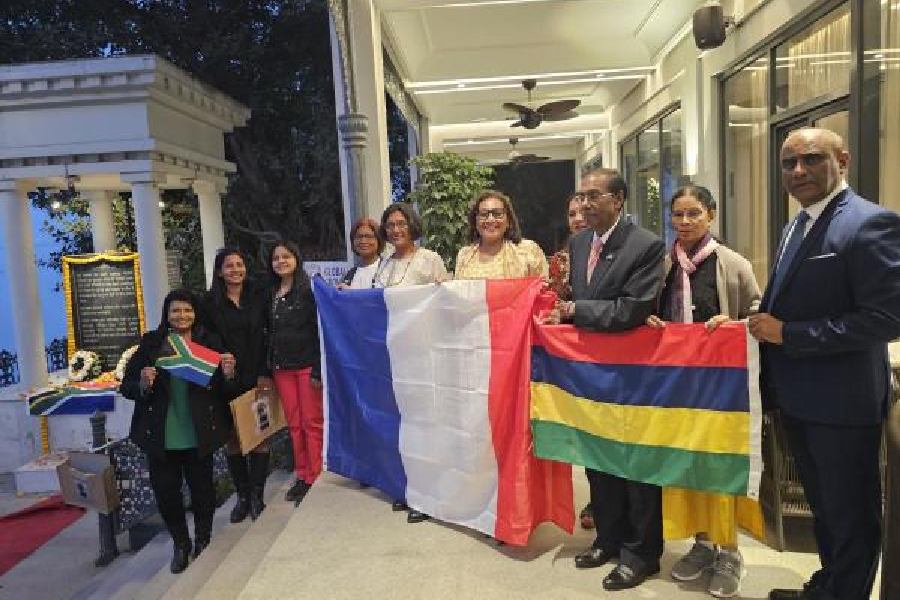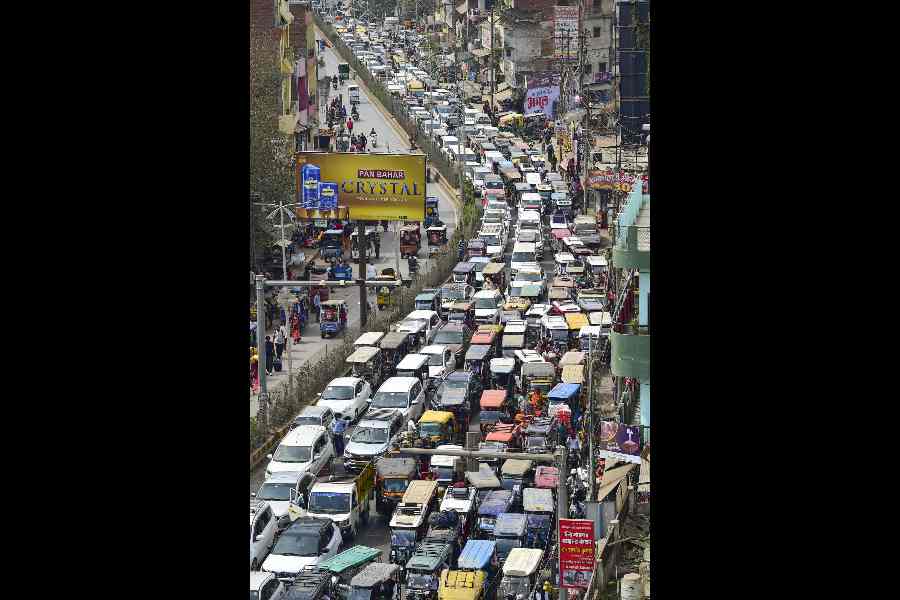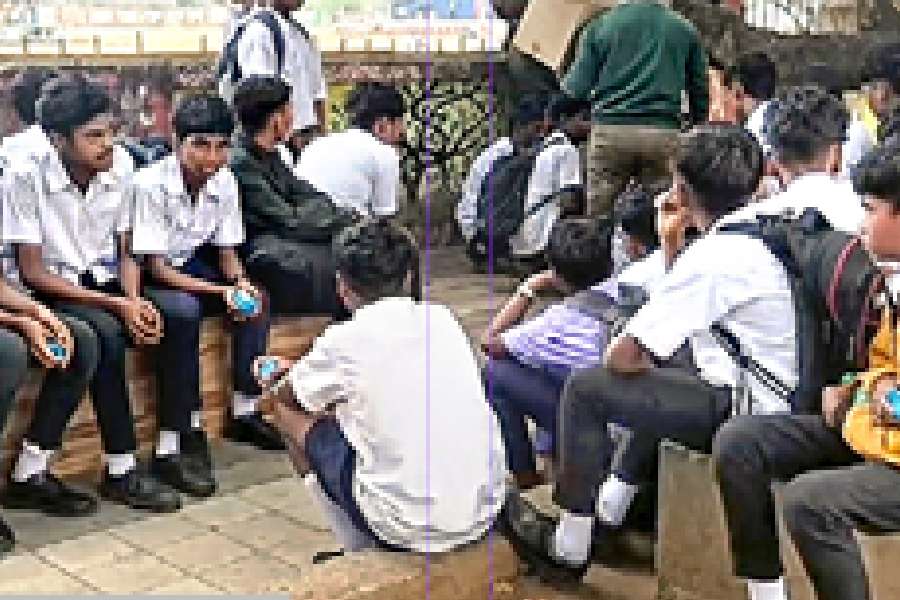Away from the din of Kidderpore, on waterfront land owned by the port trust, is a memorial to thousands of indentured labourers who had set sail from Calcutta between 1834 and 1920.
They were requisitioned mostly to work in sugarcane plantations in European colonies facing a shortage of hands after the abolition of slavery across Europe in the mid-19th century.
A few weekends ago, about 25 of their descendants under the umbrella of Global Indian Organisation (GIO), on their way back from the c in Bhubaneshwar, touched down on Calcutta and gathered in front of Indenture Memorial on a Saturday. It was also the 14th anniversary of the memorial unveiled in 2011.
Ketty Carpaille could not control her tears on reaching the spot. The schoolteacher clasped to her chest a framed family tree illustration that traced her ancestors across India and Reunion Island, where she lives.
“Mine is a Tamil family name, Carpaye. But the French spell it this way. We are the only Carpaille family in the world,” she said in French, her mother tongue, while wrapping herself in a French tricolour for a picture.
The island in the Indian Ocean is 13 hours away by air from mainland France but is under French control. Ketty is unaware where her ancestors hailed from or set sail but believes it is in Tamil Nadu. “Imagine people leaving everything behind for an unknown future! The French kept no documents of these labourers. Records started being kept only after slavery was abolished in 1848.”
Carpaille commissioned a genealogist to prepare the family tree, based on which she applied for Overseas Citizen of India (OCI) status. “The day I showed my OCI passport to my father, he wept.”
Rajindre Tewari, a Rotterdam resident who is now the international president of GIO, said his great-grandparents had sailed from Calcutta. “My father’s side was from Azamgarh and my mother’s from Ayodhya. Calcutta was the capital (of British India). They set sail from here for the Dutch Guiana, a Dutch colony. On gaining freedom in 1975, it became Suriname.”
He has heard horror stories of the months-long voyage. “A girl got kidnapped along with her uncle and aunt by recruiting agents who offered them a free ride to their village and took them to Calcutta instead. The British agents married her on the ship with an unknown man to keep her safe from others. Prisoners of the Andaman jail, many of whom were criminals, were also sent as recruits and there were reports of rape. Horror stories tumbled out years later when elderly women started sharing their memories of the voyage,” Tewari said, stressing that the Dutch planters in Suriname were well-behaved.
Since his ancestors were educated, they were appointed as translators-cum-representatives of the rest. That changed the family’s fortunes. “My nana, Suraj Prasad Sukul, became the governor of Dutch Guiana,” he said.
He remembers Hemant Kumar (Mukherjee) and Manna Dey visiting Suriname for shows at Sukul’s invitation. “My nana did a lot for the Indian community — a cultural centre, an old age home, a radio station.... He even floated a political party.”
He was so obsessed with his roots that he sent at least one child from every generation to study in India. Tewari was sent to Hindu College in Delhi for his graduation.
Sivalingam Arasen’s great-grandfather was from Tanjavore and left the Madras port to work in sugarcane fields of Mauritius.
“But the first lot of Indians — Tamils, Marathis and Telugu people — went as artisans. They built markets, post offices, roads, the treasury and even the Prime Minister’s Office. That is why you find a Mariamman temple (a rain goddess venerated in south India) in every sugarcane town,” said the 80-year-old from Mauritius.
Two ships had sailed for South Africa from Calcutta and Madras together, in 1860. A snag delayed Belvedere, the former. The latter, Truero, became the first to reach indentured Indian labourers to Durban. “The date was November 16,” said Rita Abraham, global ambassador of GPO.
“I lived in a wood-and-tin hut on stilts facing the sea till I was 5. Sandbags kept out water from inside the house,” she said.
It was a fishing community and her uncle had set up a fish stall. The community lost their huts once the Whites realised the value of beachfront properties. “We were shunted inland to Chatsworth,” Abraham said.
Indians still face discrimination, she said. “Earlier we were not white enough and now we are not black enough.”
In Calcutta, they were shown around by the port trust authorities. While most were on their first trip, some who had attended the memorial unveiling in 2011 were upset to see the dilapidated cubicles where the labourers waited dismantled to build a restaurant which opened in mid-January.
“They should not have touched history,” said Abraham. “We are not against commercial activity as long as it does not demean the historical importance of the place,” Tewari said.










